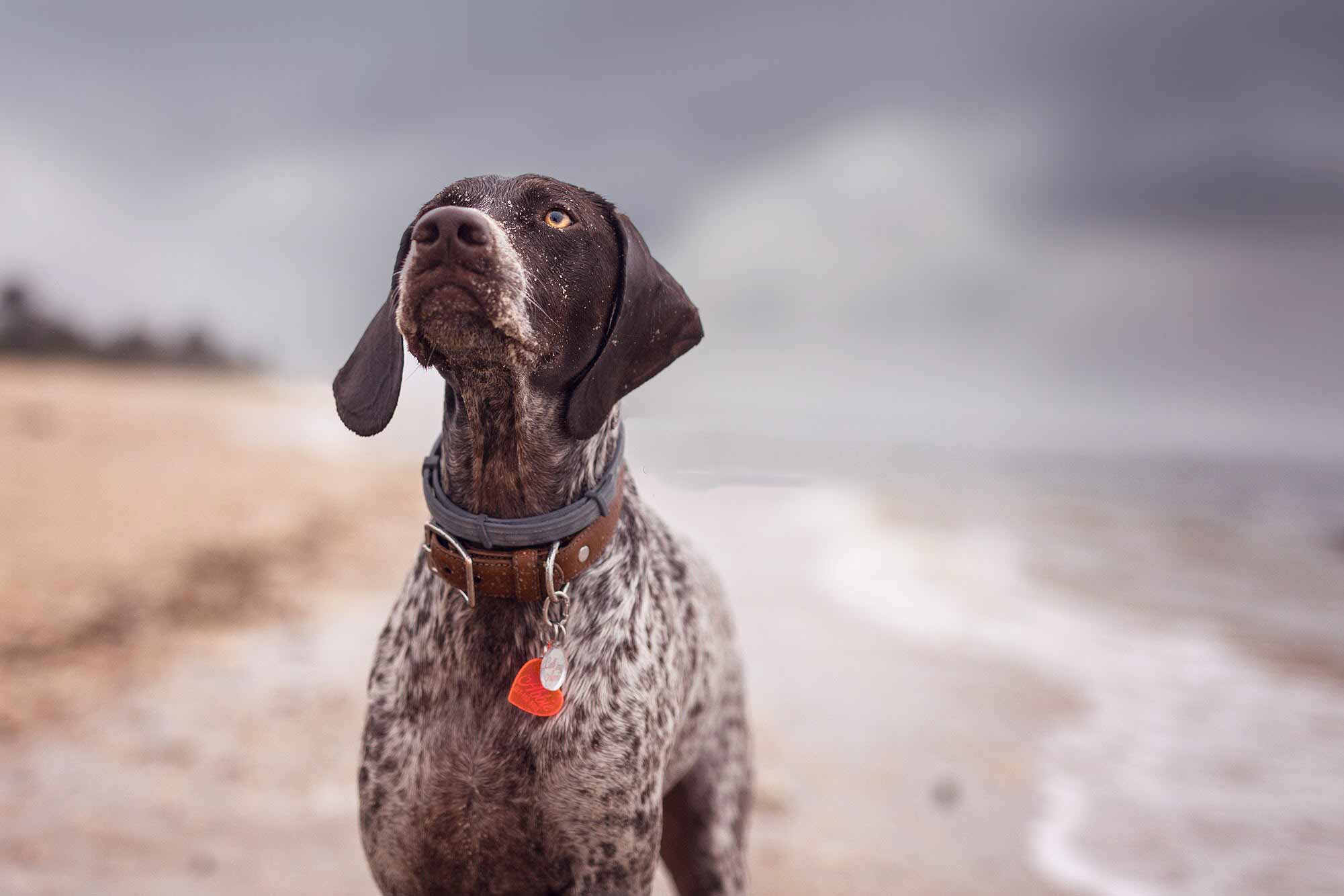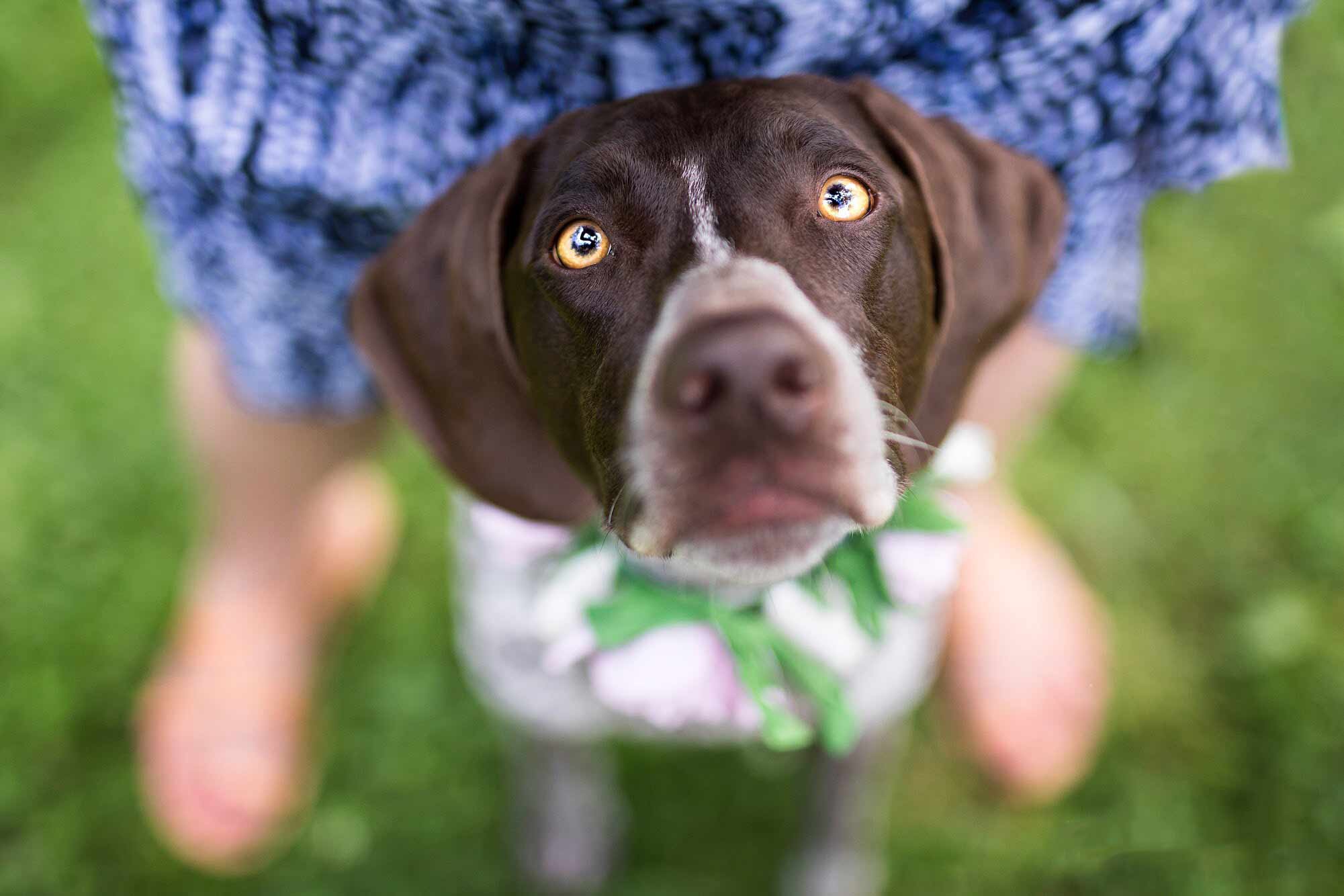UPDATED! German Shorthaired Pointer: Breed of the Week
Do German Shorthaired Pointers Make Good City Dogs?
Photographs by Natalie Siebers
When the judge for Best in Show at the Westminster Dog Show in 2016 selected GCH Vjk-Myst Garbonita’s California Journey, known as CJ, and I decided I needed to write about the breed.

German Shorthaired Pointers are a very active breed. I am starting with that fact because it’s a very important one. Think of this dog as a Porsche or Ferrari. As you can see from the photos taken by Natalie Siebers in this post, they are beautiful dogs. (This, dog, Abbie, belongs to Chelsea Evens, one of the women who run the Gal’s Best Friend website.) They were bred with a very specific purpose: to run and hunt. They are not for idle owners.
Dating back to the 17th century, German Shorthaired Pointers are the result of mixing Bloodhounds, Spanish Pointers, and English Pointers. The result is an athletic, smart, loving dog. They are both hunters and family pets. Like most hounds, their noses are probably their strongest attributes (remember they are related to the Bloodhound, the best nose in the dog world.) Because of this they may get on a trail and run until they find what they are looking for. Without proper training you may find yourself chasing your GSP whenever she is off-leash. Training will also help the German Shorthaired Pointer expend energy. A board, energetic GSP will result in a highly destructive dog. Agility training, hunting training, even simple obedience class will help in developing a well-balanced dog.

The GSP is a medium-to-large sized dog standing 23 to 26 inches at the shoulder and weighing in at upwards of 75 pounds. Their short waterproof coat comes in liver (a beautiful, rich, saturated brown color) and liver and white. Speaking of waterproof, these dogs love to swim. Part of their breeding plan was to develop a dog that was also a water retriever.
As far as health, they are a pretty healthy lot. According to DogTime.com they are prey to the ailments common to most big dogs; Hip Dysplasia, Bloat, and Lymphedema. They are also prone to certain cancers.
They require very little maintenance; the occasional bathing and brushing along with nail clipping should suffice.

Do German Shorthaired Pointers Bark?
One thing I haven’t talked too much about is this dog’s love for its family, especially kids. Their playful nature makes them a great family dog. But again, I can’t stress enough, if your German Shorthaired Pointer is not getting enough exercise, you could end up with a nervous, unhappy dog. So if you are one of the millions of people out there who watched Westminster and are now considering a German Shorthaired Pointer, give it a lot of thought. Consider your lifestyle and the time you can devote to training and exercising this wonderful breed. If you can commit, then the GSP might just be your Urban Dog.
It is important to train your city dog. You don’t want your pooch to misbehave in your building’s common areas. The good news is that GSPs are easily trained and have a strong willingness to learn, as well as to please their owners. They score “Excellent” when it comes to understanding new commands. They obey first commands about 85% of the time according to Stanley Coren, a professor of psychology at the University of British Columbia who studies dog behavior. That means it takes five to fifteen repetitions for them to learn new commands.
German Shorthaired Pointers are not considered excessive barkers. UC Davis researchers Benjamin and Lynette Hart devised a chart ranking dogs by the likelihood of barking at inappropriate times. On a scale of one to ten — with one being the least offensive barkers and ten the most excessive barkers — they get a five rating. Click here for more on Urban Dog’s take on barking.
Click here to visit the American Kennel Club’s page on the breed. And here’s a link to the German Shorthaired Pointer Club of America. They can make great Urban Dogs, just make sure you keep them active and engaged.
For tips on how to find a pet-friendly apartment in New York and other cities read Urban Dog’s guide. Big dogs pose a particular challenge, but don’t worry, you can find places that accept large breed dogs.
And just for fun, here’s a video of a German Shorthaired Pointer versus a Weimaraner tug-of-war.






